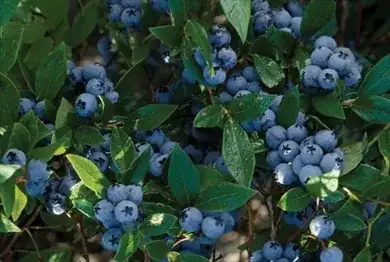I recently purchased a top hat blueberry shrub. According to the leaflet it came with, it is self-pollinating. Does this mean that it can self-pollinate, or that it only self-pollinates? Would getting another 2-3 shrubs be beneficial at all?
-
I don't know about your blueberries specifically, but plants with perfect flowers (whether or not they can self-pollinate) can potentially cross-pollinate flowers of other plants (e.g. tomatoes and peppers.) – Brōtsyorfuzthrāx Jan 03 '19 at 18:40
1 Answers
Exist in nature numerous species, more than 100, which are distinguished by differences in color of the fruits and to the characteristics of the stem. It grows wild throughout the northern hemisphere, but has a very different structure depending on the diffusion region. The widespread species in Europe are of shrub and, in general, no more than half a meter in height, are deciduous and oval berries sometimes grouped in bunches.
Against the North American varieties are real trees and grow in height up to 9 meters, with gnarled trunks and plump berries blue. The fruits of different varieties differ in size and color. Next to the small berries of European species are the American cranberries, more demanding in terms of growing. Eastern cousins, however, grow spontaneously in the forests. We have black berries, blue or red, sweet or sour and perfumes more or less intense.
Although it is a wild plant, fruit intended for trade are derived mostly from plants growing, producing, in particular, the variety and the giant American cranberry (berry red color and flavor balanced between sweet and sour)
========================================
Pollination of highbush blueberry (Vaccinium corymbosum L.)
In 1998-2000 pollinators of highbush blueberry (Vaccinium corymbosum L.) were studied in a mountain area of Friuli-Venezia Giulia (Northeastern Italy).
The effect of entomophilous pollination on blueberry production was assessed by comparing fruit setting and dropping, weight, size and seed number in blueberry branches wich had been put or not in net bags. The most active pollinators are bumblebees (Bombus spp.); the bell-shaped flowers prevents short tongue pollinators from reaching nectar glands.
Even if flowers are considered self-fertile, the lack of entomophilous pollination caused: lower fruit setting, higher fruit dropping and lower fruit size.
check from - but in italian, sorry

So the answer could be: yes and no.
Entomophilous pollination seems better, but could also be among more flowers in a single plant. More plants (in my opinion) can just increase the attraction of insects, and then the probability of intervention of insects in pollination.
- 265
- 1
- 3
- 11
- 2,286
- 13
- 17